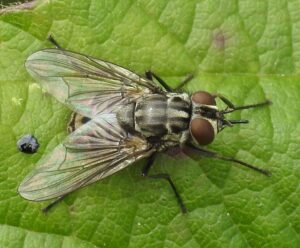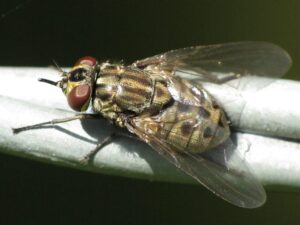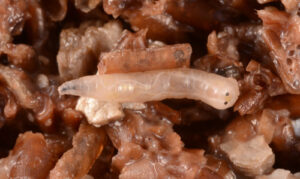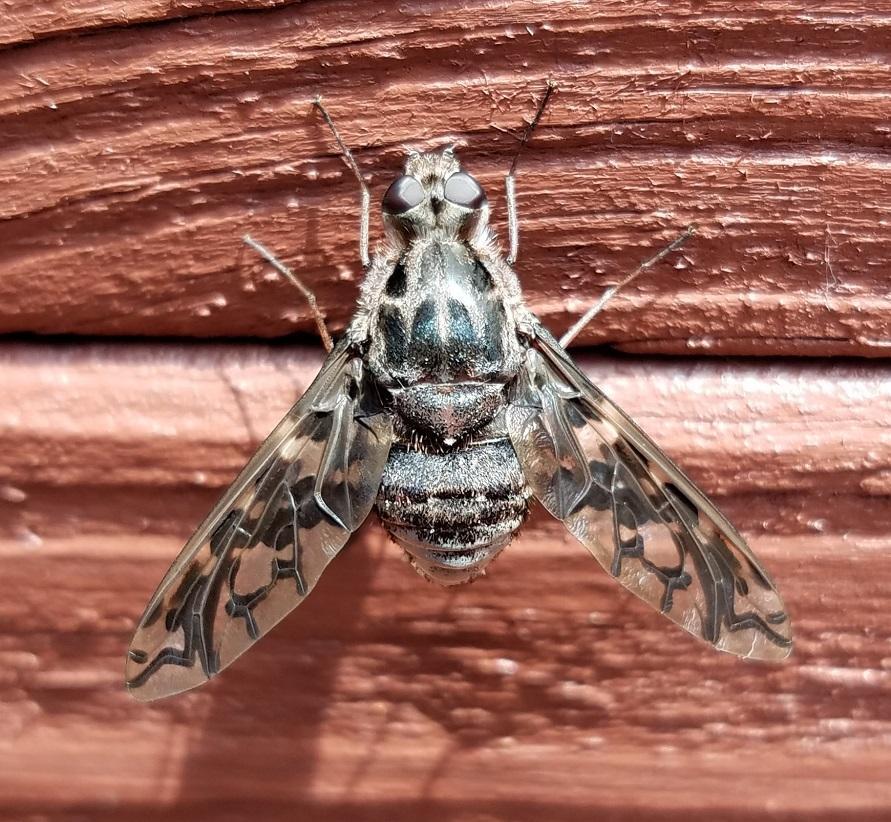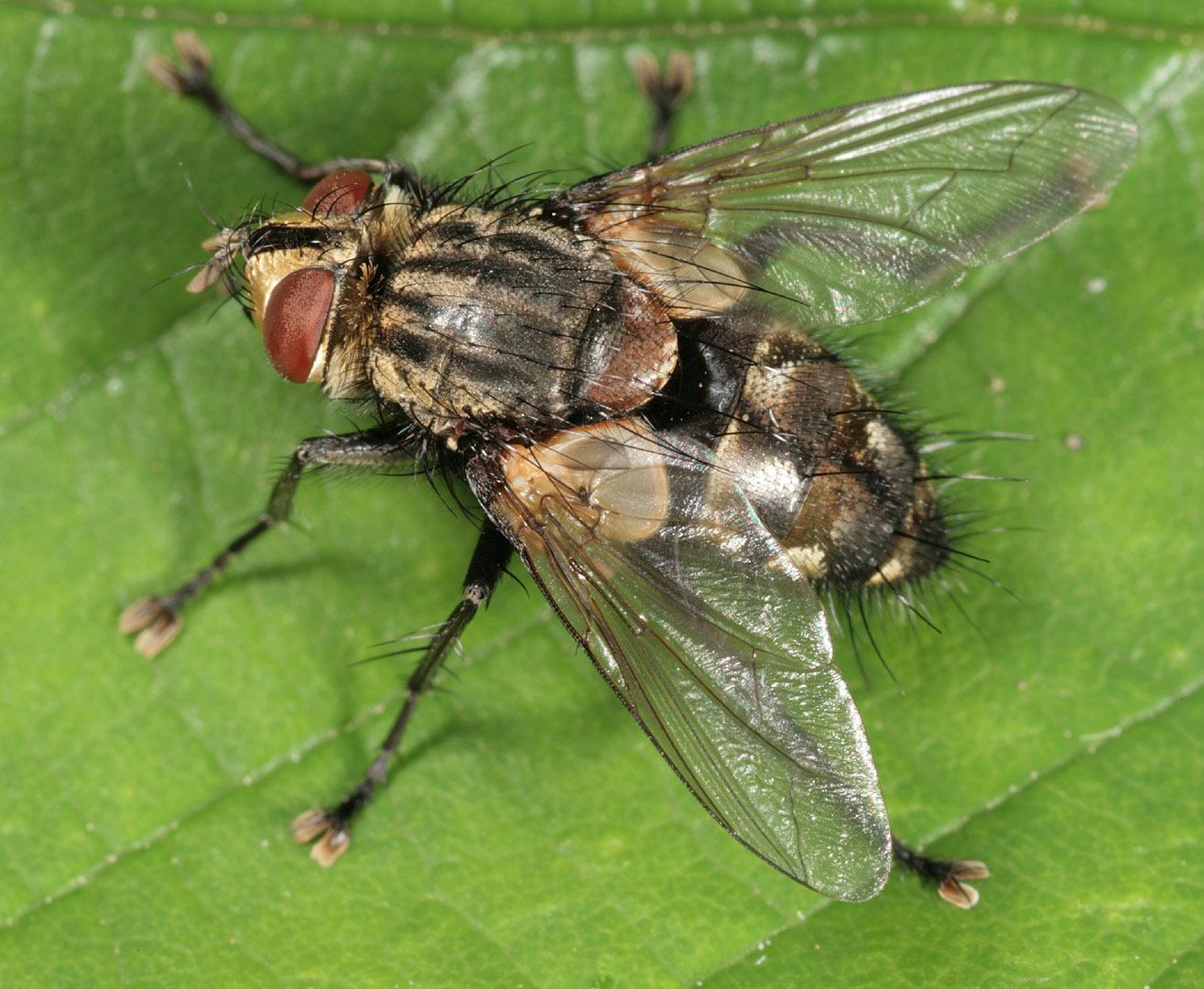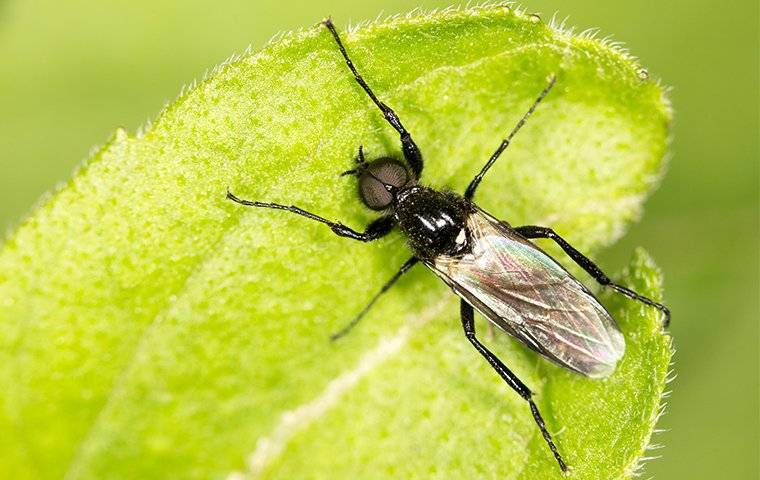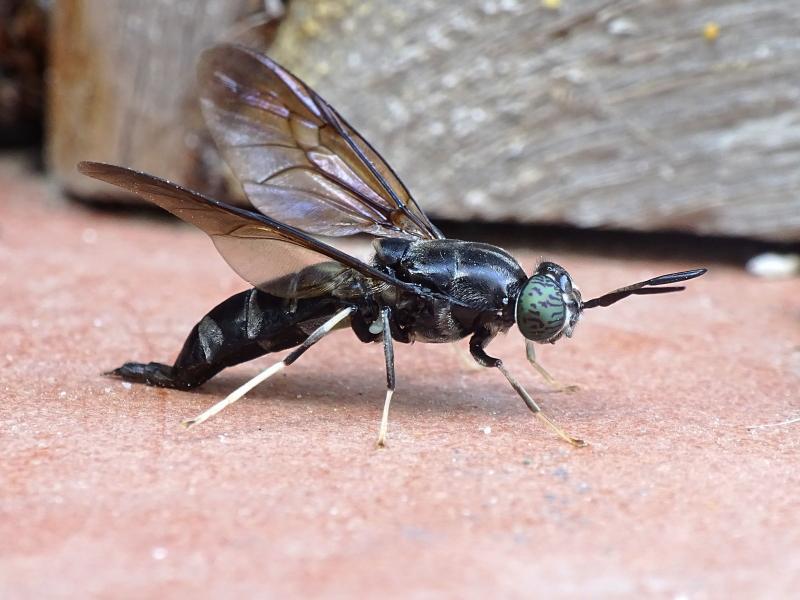Stable Fly (Stomoxys calcitrans)
Updated on
17/11/2022The stable fly, a member of the family Muscidae sucks the blood of mammals. Other names of the fly include dog fly, barn fly, biting house fly, and power mower fly. It can inflict painful bites on humans outdoors and is a carrier of diseases.It originated in Eurasia and is now found worldwide, mainly from May to October.
Scientific Classification
- Class:Insecta
- Order:Diptera
- Family:Muscidae
- Tribe:Stomoxyini
- Genus:Stomoxys
- Species:S. calcitrans
Conservation Status
Description
The gray stable fly resembles the common housefly in its looks. But it is smaller (5-7 mm in size), and closer examination reveals a slightly wider and spotted abdomen.
Distribution: All around the world.
Habitat: In and around places where cattle are kept. Maggots can be found near rotting manure near cattle or poultry.
Lifespan: 20-30 days.
Do They Bite/Sting: Yes.
Predators: Predatory beetles, mites, and other fly larvae eat the larvae of the insect. Spalangia species of parasitoid wasps are also its enemies.
Behavior and Characteristics
Diet
Both male and female stable flies feed on the blood of warm-blooded animals during the day. The female needs to have her abdomen filled with blood to the full to produce eggs. She needs 2-5 minutes to engorge, after which she becomes sluggish for some time.
Life Cycle
1. Egg Stage
The eggs are laid among decaying organic matter like manure, hay, and wood. They are white, sausage-shaped, and around 1 mm long.
2. Larva Stage
Yellowish-white 5-12 mm long larvae or maggots hatch out from the eggs in 1-4 days. Depending on environmental conditions, they pass through 3 instars in 10-30 days. They can even overwinter.
3. Pupa Stage
At the end of the 3rd instar, the larvae move to drier places nearby and change into reddish-brown pupae of size 4-7 mm. The stage lasts for 6-20 days.
4. Adult Stage
In general, the males die after mating, and the females die after laying eggs. The life cycle takes 2 weeks to complete at temperatures of around 81oF (27oC). This time is heavily dependent on the temperature and the quality of the nutrients available to the larvae.
Comparison with Similar Species
Houseflies
Unlike the housefly’s mouthparts adapted for sponging, the stable fly’s mouth parts are meant for biting.
Horse Flies
Horse fly bites leave trails of blood from the wound, whereas those of the stable fly are less bloody. They just leave tiny red dots of blood after feeding.
Getting Rid of Stable Flies
Heavy infestations of stable flies in cattle can make the latter anemic and reduce their milk production. It also bites humans at rest, outdoors. In many parts of the world, the fly is a carrier of trypanosomid parasites that cause Surra, equine infectious anemia, brucellosis, African horse sickness, and fowlpox. It is also a carrier of bacteria causing anthrax
Sanitation is the first step in killing stable flies. Old hay, soiled bedding, and spilled feed should be removed. Feeding areas and manure should be cleaned up at least once a week for effective control. Other steps of management include insecticide baits, parasitic wasps, premise sprays, sticky traps, and feed additives.
FAQs
Stable fly bites can be very painful. There is itching but rarely any allergic reaction at the bite site.
The bitten area commonly has red rashes and small raised red bumps.
Source
warehouse1.indicia.org.uk, bugguide.net, entnemdept.ufl.edu




